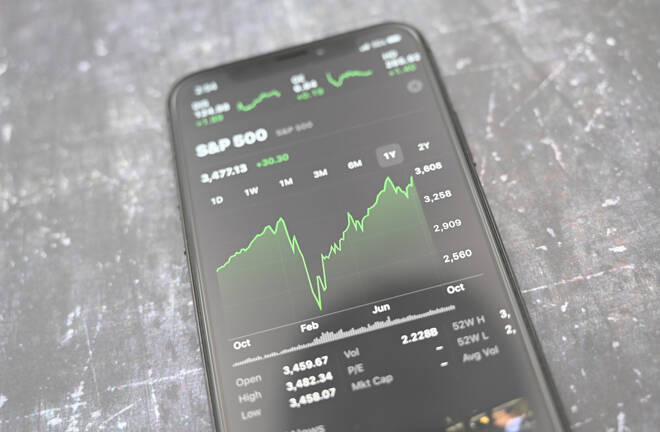Advertisement
Advertisement
A Divergence Between S&P 500 and the Stock Market Breadth May Signal a Market Top
By:
Last week S&P 500 index (SPX) closed at an all-time high despite the stock market breadth continued to deteriorate, only 42% of stocks are above 200-day average, as shown in the comparison chart below.
SPX Daily Chart
Based on the comparison between the Percentage of stocks above 200-Day average and the SPX for the past 10 years, the divergence happened since Feb 2021 as the SPX continue to trend higher, the number of stocks participated in the uptrend is getting lesser, deteriorated from 90% to 42% as of last Friday since Feb 2021.
In fact, many growth stocks such as Affirm Holdings (AFRM), CrowdStrike Holdings (CRWD), Fiverr International (FVRR), MercadoLibre (MELI), Sea (SE), Twilio (TWLO), DocuSign (DOCU), Roku (ROKU), PayPal Holdings (PYPL), etc…experienced big drawdowns range from 32%-65% from their all time high.
There are only a handful of outperforming stocks like Apple (AAPL), Microsoft (MSFT), Lam Research (LRCX), Broadcom (AVGO), Qualcomm (QCOM), etc… supporting the S&P 500 index.
The divergence between the SPX and the stock market breadth are certainly not a healthy sign for the bull market especially it has been persisting for nearly 10 months. It might only take a few early capitulations from the funds to trigger a broad market sell-off when the market is at the vulnerable point.
It can be noticed from the chart that 50% level is a support. When the percentage of stocks above 200-Day average dropped below 50%, there was a relatively sharp sell-off in SPX, as highlighted in orange color in 2011, 2014, 2015 and 2018. The market breadth is often acted as a leading indicator before the damage hits the SPX.
Current Market Outlook on S&P 500
S&P 500 did have a rally after an oversold condition at the support area while there was presence of demand as pointed in last week’s article. Detailed analysis can be found by watching the price volume analysis for the market outlook on YouTube.
As shown in the screenshot on 8 Dec from my private Telegram Group for Mastering Price Action Trading course above, the four US major indices – S&P 500 (SPX), Dow Jones (DJI), Nasdaq (IXIC) and Russell 2000 (RUT) are likely in a consolidation with high volatility to both sides.
It is obvious that there was an increase of supply on the down wave since Black Friday selloff, which is yet to be tested. As S&P 500 approaches the resistance zone at 4700, it could be vulnerable for a correction when the sellers step in to lock in profit or initiate short positions. Should a correction happen, the previous swing low near 4500 is a natural area for buyers to step in for bargain hunting.
It is critical to judge the supply level together with the characteristics of the price action (spread and velocity) to anticipate next move. For a bearish scenario, watch out for a Wyckoff up thrust (false breakout) with increasing supply followed by a break below 4650. For bullish case, S&P 500 needs to commit above the resistance level at 4720.
Based on the market breadth and the Wyckoff phase analysis on SPX, a trading range between 4500-4700 is expected. There could be other headwind ahead such as Fed’s tapering of the bond-buying program and an urgency for interest rate hike, which I will be discussing in my weekly live session on Sunday. Click here to visit TradePrecise.com to get your weekly market insights straight to your inbox for free.
About the Author
Ming Jong Teycontributor
Ming Jong Tey is a trader who specializing in price action trading with Wyckoff analysis. He is active in swing trading and position trading of stocks in US and Malaysia and day trading in S&P 500 E-mini futures.
Advertisement
